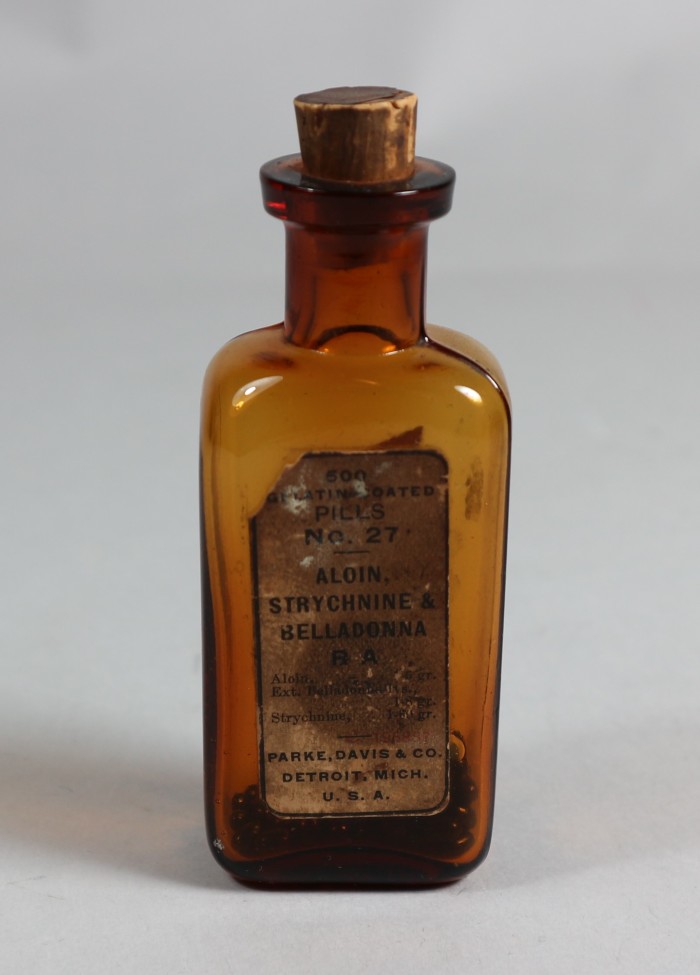Bottle, Medicine
Artifact
Identifier:
2012.001.219Description
Amber glass bottle, rectangular in shape with a neck and large rim around the mouth of the bottle. There is a cork stopper and paper label that is rectangular with round corners. The label has moderate discolouration and staining, and is ripped on the upper corner on the true right side. Inside the bottle are small, round, dark coloured pills. The pills are Aloin, Strychnine, and Belladonna, and were produced by Parke, Davis & Co.Additional Information
Parke, Davis and Company was founded in Detroit, MI in 1866 by physician and pharmacist Dr. Samuel P. Duffield, businessman Hervey C. Parke, and salesman George S. Davis. Dr. Duffield withdrew from the venture in 1869, and the name Parke, Davis, & Company was officially adopted in 1871, and incorporated in 1875. Their Walkerville, Ontario plant was built in 1890. The company was once the largest pharmaceutical company in the US, built the first pharmaceutical research laboratory in the US, and is credited with developing the first systematic methods for performing clinical trials of new medications. Another pharmaceutical company, Warner-Lambert, acquired Parke, Davis, & Co., in 1970, which was in turn acquired by Pfizer in 2000. ;Compounds of aloin, strychnine, and belladonna were used as a stimulant and to treat a variety of human ailments. Most commonly, the purgative (laxative) effects of the drug were used to treat constipation and gastrointestinal malades.Aloin is derived from the aloe plant, and has been used as a stimulant-laxative used to treat constipation. Aloin has been used in traditional medicine since antiquity, and has been known to produce harsh side effects. As of 2002, the US FDA mandated that manufacturers stop making over-the-counter medications using aloe, however it is still allowed in dietary supplements and food products.
Strychnine is a highly toxic alkaloid that has most commonly been derived from the seeds of the Strychnos nux-vomica tree, native to the tropical forests of Southern India, Sri Lanka and Indonesia. Its toxic effects have been known since the times of ancient India, however in the late 19th century and early 20th century, it was used as an athletic performance enhancer and recreational stimulant. It was believed that the convulsant effects it produced were beneficial.
Belladonna (also known as deadly nightshade) is a poisonous, herbaceous plant native to Europe, North Africa, and Western Asia. It is in the same family as tomatoes, potatoes, and eggplant, however its foliage and berries are highly toxic. Belladonna extracts have been used for centuries in herbal medicine as a pain reliever, muscle relaxer, and anti-inflammatory, and to treat menstrual problems, peptic ulcer disease, histaminic reaction, and motion sickness, among other ailments. The plant has also been used in cosmetics, dietary supplements, as a recreational drug, and as a poison.
Creator:
Parke, Davis, & Co.
(manufacturer)
